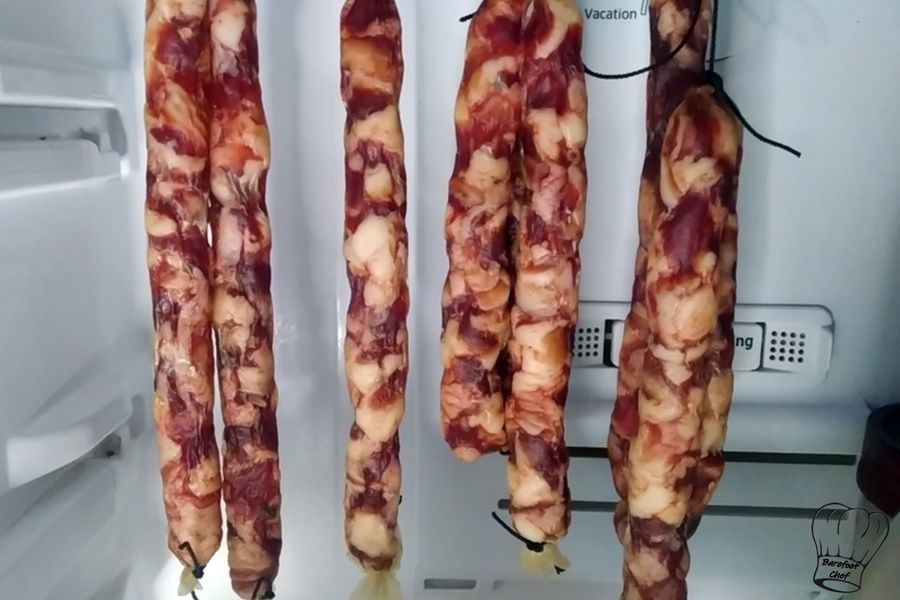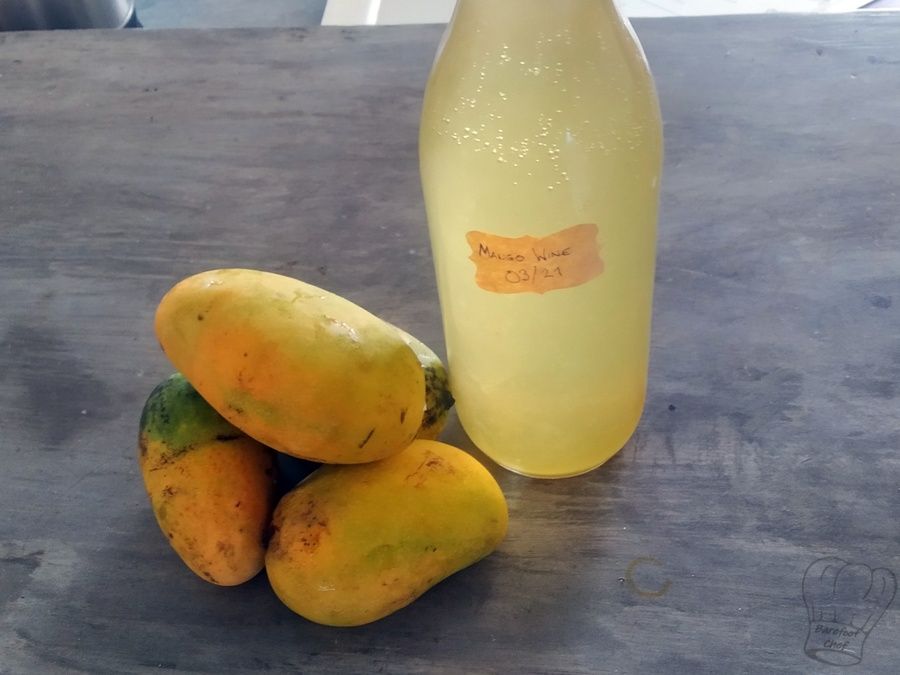

Barefoot Chef
Sparkling Mango Wine
This sparkling mango wine makes a crisp, slightly dry and tangy wine depending on how it ferments. Generally, the most flavorful mangoes make the best wine.
Do I need yeast nutrients?
Usually the mangoes add enough to the ferment to not use any yeast nutrient but it sometimes does need a little acid added in either lemon juice or acid blend but this depends on the sweetness in the mangos.
How much sugar?
The amount of sugar depends on the natural sugars occurring in the fruit. Measure the Specific Gravity after you blend the pulp and add sugar to get up to the start gravity of 1.070 – 1.090 (normal finished ABV will be 10-13%). Finish Gravity should be 0.990 (for dry wines) to 1.005 (for sweet wines). I used the FermCalc app (link below) to work out how much sugar to add but there are many other calculators online.
Important note
For the bottles is that they must be designed to take the pressure of carbonated drinks!! Old soda bottles are good even if plastic. Do not use wine bottles as they may explode.
Do I need to age it?
It can be drunk straight away but is better if aged for at least six months in the carboy, stored in a cool, dark, and dry place. The longer you allow the wine to age, the smoother it becomes as it advocates its fruity tang and matures its flavors.
EQUIPMENT
Blender
Large Fermenting Vessel
Airlock
INGREDIENTS
1 kg (2.2 lbs) Mango
5 g (0.2 oz) Yeast
175 g (6 oz) Sugar (amount may depend on the sweetness of the mangoes)
500 g (1 lbs) Water
INSTRUCTIONS
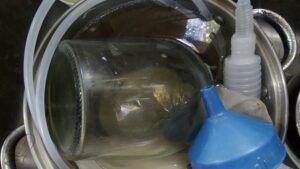
Before brewing sanitize the jar, sieve, jug & bottles etc in a 5 gallon bucket with one teaspoon of household bleach for at least 30 minutes
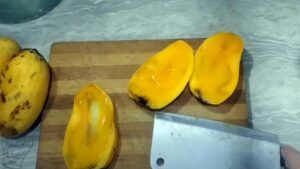
Remove the flesh from the mango's and scrape the flesh from the stones. Place it in a blender with the water and sugar.

Measure the Specific Gravity and add sugar/water to get up to the start gravity of 1.070 – 1.090 (normal finished ABV will be 10-13%). I used the ferment calc app to work out how much sugar to add

Pitch (mix) the yeast into a small amount of water and allow it to sit for 5-10 minutes you should see bubbles to know the yeast is active. Add to the mango juice in the fermenting vessel and shake well to introduce oxygen. Place an airlock and let sit. After a few days you should see bubbles forming
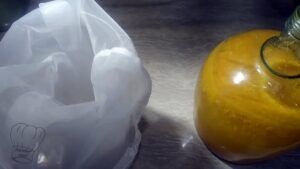
After 7 days strain the pulp and replace into the fermenting vessel. Continue the fermentation until bubbles slow and you get a reading of 1.010. Place into bottles (make sure they can handle pressure) discarding the sediment left at the bottom of the fermenting vessels. Leave at room temperature for a week and refrigerate before opening.

Barefoot Chef
This is the barefoot chef
Related Posts

Aug 18, 2022
Ginger Wine
Aug 18, 2022
Tuak – Malaysian Style Rice Wine
Sep 13, 2022
Homemade Rice Wine (Choujiu)